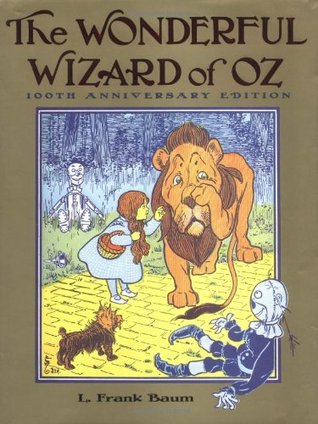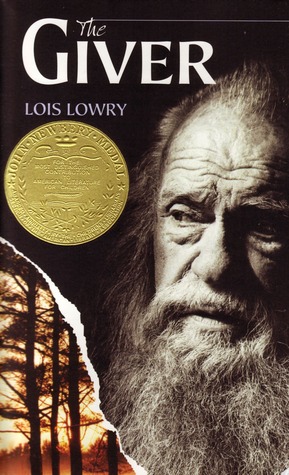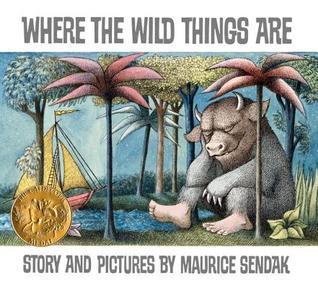A Tuesday Ten: Challenged and Banned Books!
Posted by Stephanie Whelan
So folks, it’s Banned Books Week. And I thought I’d list a few of those that have gotten challenged and/or banned over the years in children’s speculative fiction. All of the books on this list are well known, classic titles. Many are loved and read again and again. But they’ve weathered their fair share of controversy.
As a librarian, I don’t ascribe to censoring or banning books. Limiting access to books is a dangerous precedent whether or not I agree with said books. But I’m also sensitive to the fact that parents will come in wanting “safe” books for their child, or “appropriate books” for their nine-year-old. Or come in with a child who does not like death or big bad things in his/her reading. That’s where my job comes in–a patron tells me what they want to find, and I can find something that will fit. But I can’t do that job as well if books are kept from the shelves. I support inclusion rather than exclusion, and will continue to do so.
To all parents out there, my message is this: If you are concerned with what your child is reading, then read it along with them or before they do. Book discussion can be a brilliant way to spend time with your grade-school child, and it helps to have different perspectives on what people think about a book for the child to start understanding it critically. Read with them, talk to them about the books, especially the ones with the hard stuff in them. Don’t simply “test” them on their knowledge but discuss what you liked and didn’t, how you felt and didn’t. Make it a conversation, make it important.
And for reference, here’s a quick definition of what it means when a book is challenged or banned: “A challenge is an attempt to remove or restrict materials, based upon the objections of a person or group. A banning is the removal of those materials. Challenges do not simply involve a person expressing a point of view; rather, they are an attempt to remove material from the curriculum or library, thereby restricting the access of others. As such, they are a threat to freedom of speech and choice. American Library Assocition. Office of Intellectual Freedom.
1.

The Wonderful Wizard of Oz by L. Frank Baum , illustrated by W. W. Denslow (HarperCollins, c1900)
Back in, I believe, 1928 all public libraries in Chicago banned the book because of its “ungodly” influence and “for depicting women in strong leadership roles.” In 1957, the Detroit Public Library banned the book for having “no value for children of today” and “negativism”. Professor Russel B. Nye of Michigan State University publically responded that “if the message of the Oz books- that love, kindness, and unselfishness make the world a better place- has no value today, then maybe the time is ripe for reassess a good many other things besides the Detroit Library’s approved list of children’s books.” There have been added challenges over the years for on this book for talking animals, which some groups particularly see as an affront to their faith.
2.

A Wrinkle in Time by Madeleine L’Engle (Square Fish, c1962)
One of the most frequently challenged books, this story of a young girl who sets out across space and time to rescue her father and then pull her brother from the clutches of an evil machine tends to get attacks from all sides. So why is it challenged? For purportedly having New Age themes and objects such as crystal balls, for including Jesus in a list of great artists, philosophers and so forth, occasionally for being too Christian, and for having elements of the occult. It’s a book that doesn’t really try to be anything else what it is–and it’s lasted well beyond any challenges that have come up around it.
3.

The Giver by Lois Lowry (Ember, c1993)
I can bet you that since the movie got released for this classic dystopian read (the one that regularly finds its way onto multiple summer reading lists) we’ll see an uptick in challenges. While not as high on the list in recent years, the book is frequently challenged for content inappropriate to the age of the readers. Discussion of euthanasia, suicide, belittling the family and motherhood . . . which is kind of bizarre when Lowry was writing a book that revealed the horror of Jonah’s society in which these things existed. Jonah’s awakening to the lack of choice and the lack of emotional connection and love in his society is pointed and clear. There’s also the mild sexual content of Jonah’s stirrings that have some parents challenging this as being too mature for middle grade audiences.
4.

Harry Potter by J. K. Rowling (Scholastic, c1997)
Of course, one of the things that gets a book challenged and banned is simply its ability to be in the public eye. The Harry Potter series has to be among the most well known sets of children’s books out there right now, as such it tends to provoke challenges. Most commonly the challenges are very direct, an objection on grounds that these stories promote occultism and witches. Any mention of witches and witchcraft will cause certain groups to challenge a book. Most never get enough public spotlight to be challenged as often as the book about this boy wizard is. Harry’s also been challenged for violence which, to be fair, the latter books in the series have quite a bit of. Battles of good vs. evil often have a good deal of violence associated with them.
5.

Sylvester and the Magic Pebble by William Steig (Simon & Schuster, c1969)
When this story of a donkey boy with a magical wishing stone was published in 1969, it was banned. Not for magic, or talking animals so much, but because the police in this story are depicted as pigs. Apparently some saw this as the creator making a particular political point about law enforcement, despite the fact that the police are portrayed as helpful and businesslike, and the other characters in the book are all anthropomorphized animals. This was a fascinating book as a kid because it showed a very real danger of having an item that granted real wishes and then wishing something that could not be easily undone. I also really wanted that pebble . . .
6.

The Lorax by Dr. Seuss (Random House, c1971)
Now here’s a book that’s pretty overt in its message. Seuss was no slouch in the politics department and many of his books have pointed political and social statements to make. In this case, this is a cry for environmental responsibility done through the vehicle of the Lorax who warns our selfish narrator of the damage he’d doing to the land, but to little success. Well apparently this was banned in 1989 in California because it negatively portrays the logging industry. Quite possibly the weirdest banning of a Seuss book is the banning of Green Eggs and Ham which was banned for decades in China for “a portrayal of early Marxism”. And here I thought it was a book to help convince picky eaters to try what’s on their plate . . .
7.

Charlotte’s Web by E. B. White, pictures by Garth Williams (HarperCollins, c1952)
This classic of children’s literature has been challenged for featuring talking animals. According to one group’s protest: “humans are the highest level of God’s creation and are the only creatures that can communicate vocally. Showing lower life forms with human abilities is sacrilegious and disrespectful to God.” Also, the death of Charlotte, the spider, has been a sticking point for some who find it inappropriate material for a children’s book. Granted, this book was probably the first one where I encountered a character I’d grown to love dying, but I don’t remember it scarring me for life. Maybe preparing me for life would be a better way of seeing it. Oh, and this book is one of many that’s been oddly banned from school curriculum where it seems the notion of the Islamic rules against eating pork have been extrapolated to mean that Muslim kids shouldn’t read about pigs like Wilbur. I think this has been mostly silliness by the schools rather than a real position of Muslim parents from everything I’ve read.
8.

Where the Wild Things Are by Maurice Sendak (HarperCollins, c1963)
To my mind, this is one of the most amazing picture books ever written. And, as a librarian I’ve been reading it to kids for years, and I’m stilled amazed at how rapt an audience it gets–even with toddlers and preschoolers. But when this book first was published it met with a lot of controversy. Psychologists condemned it as “too dark and frightening.” In a March, 1969 Bruno Bettelheim called the book psychologically damaging for 3- and 4-year-olds. It’s also been challenged over the years for images that seem to promote supernaturalism and witchcraft, as well as for the uncivilized behavior of Max himself. This hasn’t stopped it from becoming one of the most beloved children’s picture books of all time. Of course, this is hardly the only book of Sendak’s that’s caused controversy!
9.

Charlie and the Chocolate Factory by Roald Dahl (Puffin, c1964)
Sometimes the controversy around a book can cause a change, as it did with this famous title. Eleanor Cameron, the author of The Wonderful Flight to the Mushroom Planet, called Charlie and the Chocolate Factory “one of the most tasteless books ever written for children“! She particularly took objection to the Oompa Loompas being African pygmies who were taken from their homes in Africa to work in the factory. This caused a huge controversy. It seems that Dahl heard the objections and went about rewriting the Oompa Loompas in the 1973 version. Anyone whose read the rewritten version will encounter Oompa Loompas as dwarfs with rosy white skin who were from Oompaland. The book was also taken off the shelves in Boulder, Colorado by a librarian who deemed the book “espoused a poor philosophy of life”. Again, Dahl’s body of work is no stranger to controversy. At least a few of his books wind up on the challenged list every year.
10.

The Giving Tree by Shel Silverstein (HarperCollins, c1964)
Let it be known that on a personal level, I do not like this book. But liking or not liking a book is never a reason to ban it or censor it from others, who deserve to make up their own minds regarding such things. The Giving Tree has been challenged for criminalizing the logging industry. It’s an odd charge for a book about the relationship between a boy and an anthropomorphized tree. The tree happily gives the boy whatever he needs to make him happy, despite the cost to herself. The other challenge, is that this book is “sexist” because of the male/female relationship depicted.
So here’s my list! What are your favorite banned books from SF/Fantasy for kids?
About Stephanie Whelan
I'm a children's librarian with a life-long love of all things science fiction and fantasy.Posted on September 23, 2014, in General Posts, Lists and tagged Authors, Books, Children's Books, Children's Literature, fantasy, Lists, literature, MG Books, Middle-Grade Fiction, Picture Books, Reading, reviews, Science Fiction, SF. Bookmark the permalink. 2 Comments.
Just yesterday, someone emailed my library in all seriousness to let us know that Banned Book Week is a conspiracy by the ALA, a liberal organization bent on making everyone promiscuous homosexuals and destroying American decency in general.
It’s so nice to know of someone else who doesn’t like The Giving Tree!